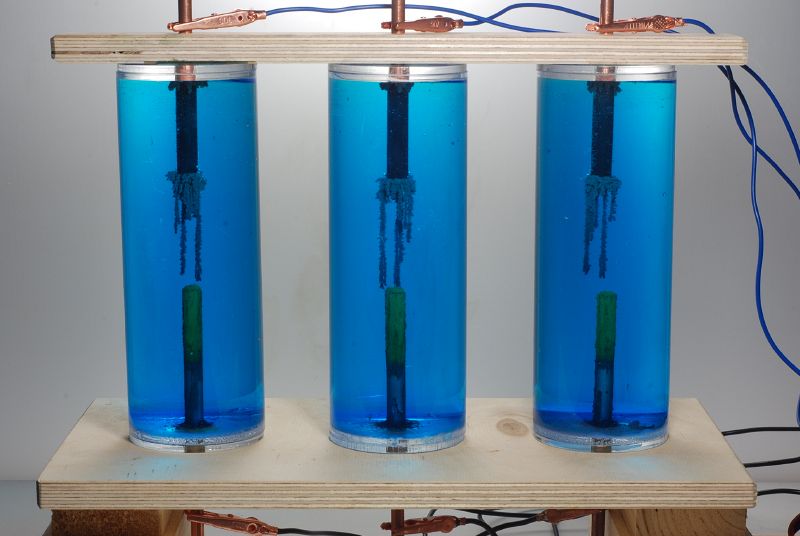No edit summary |
No edit summary |
||
| Line 21: | Line 21: | ||
When the growing copper fractal closes the gap between the potentials, the unit registeres the resulting drop in resistance and reverses the polarity of the electrodes. | When the growing copper fractal closes the gap between the potentials, the unit registeres the resulting drop in resistance and reverses the polarity of the electrodes. | ||
In this way the growth process is also reversed, which usually results in the breaking of a grown structure or their dissolution.<br> | In this way the growth process is also reversed, which usually results in the breaking of a grown structure or their dissolution.<br> | ||
In case of a breaking structure the resistance jumps up again, which again results in a reverse of polarity | In case of a breaking structure the resistance jumps up again, which again results in a reverse of polarity. | ||
This behaviour continues until | This behaviour continues until the units use up their electrodes and therefore have no more way to transport energy.<br> | ||
---- | ---- | ||
Revision as of 23:56, 9 October 2013
Material:
Wood
Plexiglas cylinder
Copper bar massive
Copper sulfate solution
Arduino Uno
Powersupply 12V 2.1A DC
3x Resitor 2.2Ω
6x Relais
electrochemical closedcircuit system #3:
The electrochemical closedcircuit system #3 comprises of three units. Each unit acts independently, but they share the same source of engergy.
The units strive to close the gap between their electrodes through electrochemical processes.
While solid copper at the anode gets reduced and copper ions are pulled into solution, copper ions at the kathode get oxidized and go into solid state.
The reaction is driven by the electric potential differences between the electrodes.
When the growing copper fractal closes the gap between the potentials, the unit registeres the resulting drop in resistance and reverses the polarity of the electrodes.
In this way the growth process is also reversed, which usually results in the breaking of a grown structure or their dissolution.
In case of a breaking structure the resistance jumps up again, which again results in a reverse of polarity.
This behaviour continues until the units use up their electrodes and therefore have no more way to transport energy.
Timelapse: <videoflash type="vimeo">69923035</videoflash>
Presentation at Summaery 2013:



